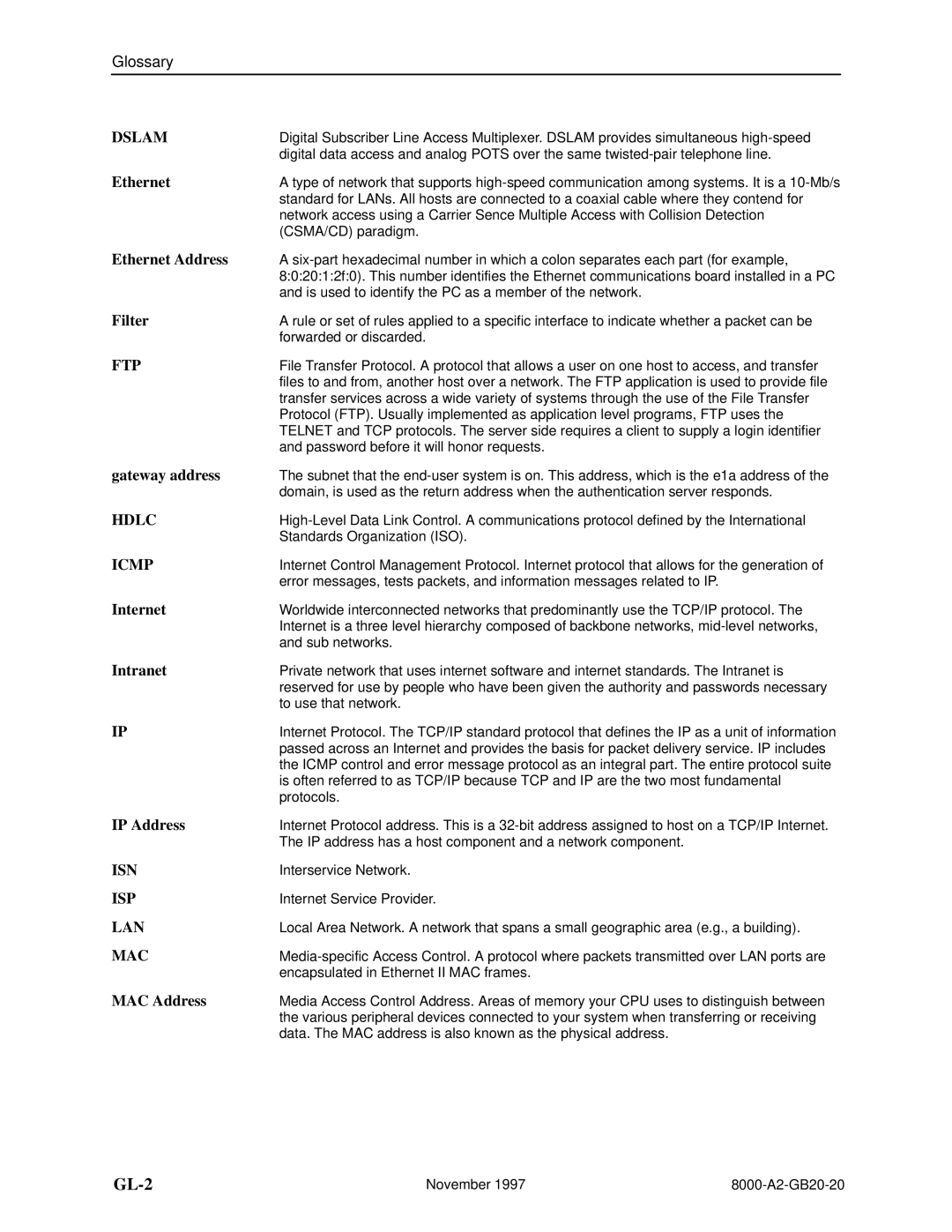Glossary
DSLAM | Digital Subscriber Line Access Multiplexer. DSLAM provides simultaneous |
| digital data access and analog POTS over the same |
Ethernet | A type of network that supports |
| standard for LANs. All hosts are connected to a coaxial cable where they contend for |
| network access using a Carrier Sence Multiple Access with Collision Detection |
| (CSMA/CD) paradigm. |
Ethernet Address | A |
| 8:0:20:1:2f:0). This number identifies the Ethernet communications board installed in a PC |
| and is used to identify the PC as a member of the network. |
Filter | A rule or set of rules applied to a specific interface to indicate whether a packet can be |
| forwarded or discarded. |
FTP | File Transfer Protocol. A protocol that allows a user on one host to access, and transfer |
| files to and from, another host over a network. The FTP application is used to provide file |
| transfer services across a wide variety of systems through the use of the File Transfer |
| Protocol (FTP). Usually implemented as application level programs, FTP uses the |
| TELNET and TCP protocols. The server side requires a client to supply a login identifier |
| and password before it will honor requests. |
gateway address | The subnet that the |
| domain, is used as the return address when the authentication server responds. |
HDLC | |
| Standards Organization (ISO). |
ICMP | Internet Control Management Protocol. Internet protocol that allows for the generation of |
| error messages, tests packets, and information messages related to IP. |
Internet | Worldwide interconnected networks that predominantly use the TCP/IP protocol. The |
| Internet is a three level hierarchy composed of backbone networks, |
| and sub networks. |
Intranet | Private network that uses internet software and internet standards. The Intranet is |
| reserved for use by people who have been given the authority and passwords necessary |
| to use that network. |
IP | Internet Protocol. The TCP/IP standard protocol that defines the IP as a unit of information |
| passed across an Internet and provides the basis for packet delivery service. IP includes |
| the ICMP control and error message protocol as an integral part. The entire protocol suite |
| is often referred to as TCP/IP because TCP and IP are the two most fundamental |
| protocols. |
IP Address | Internet Protocol address. This is a |
| The IP address has a host component and a network component. |
ISN | Interservice Network. |
ISP | Internet Service Provider. |
LAN | Local Area Network. A network that spans a small geographic area (e.g., a building). |
MAC | |
| encapsulated in Ethernet II MAC frames. |
MAC Address | Media Access Control Address. Areas of memory your CPU uses to distinguish between |
| the various peripheral devices connected to your system when transferring or receiving |
| data. The MAC address is also known as the physical address. |
| November 1997 |
